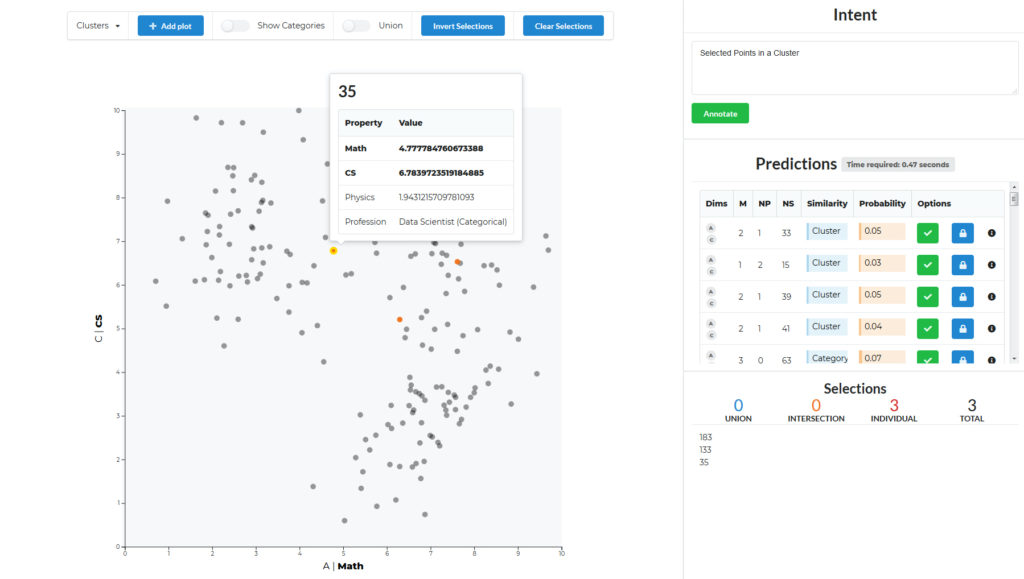I am grateful for having received travel support as part of the integrated training group of the SFB-TRR 161 for a research stay at the University of Utah (Salt Lake City, UT, USA) from June 1 to August 30, 2019.
As a member of project A01 of the SFB-TRR 161, I am researching ways to quantify and analyze uncertainty in visual computing. As part of our second work package (“Fuzzy Selection and Ambiguous User Intent”) of the second funding period, we aim to model and predict the users’ intent when interacting with visualization systems. Understanding the goal of the user would allow for adaptations of the visualizations, for example. When performing complex analysis, the users’ intent is also an important provenance trace.

During my research stay, I joined the Visualization Design Lab (VDL) at the University of Utah, which is led by Prof. Miriah Meyer and Prof. Alexander Lex. It is embedded in the larger Scientific Computing and Imaging Institute (SCI). VDL has excellent expertise in researching and prototyping user-centered systems, and they are also interested in better understanding the users’ intent. Because of this, the collaboration between our two groups was a very natural fit.
As part of previous work, the VDL had created a provenance tracking library that we used as the foundation of our system. It provides the ability to log all user interactions with a website and visualization system running within. We set out to create a prototypical system to predict the users’ intent when selecting points in single or multiple scatterplots. To do this, we surveyed different intentions that a user might have when interacting with scatterplots. We collected literature from the field of data mining to get an overview of possible types of intent. Amongst others, these intents are, for example: looking for outliers, performing correlation analysis, and selecting clusters.

For our prototype, together with Kiran Gadhave, we implemented a client-server architecture with an interactive visualization system on the frontend and a prediction system in the backend running on a separate server. We also used this separation of concerns to split up the work into manageable subparts. Together, we had many discussions and brainstorming on a suitable interface between the two systems and how to model user intent in general. The advice given by Prof. Lex was invaluable, and we also received a lot of feedback on our system from other members of the group.
As a direct result of our collaboration, we have submitted a paper to EuroVis 2020 with coauthors from both research groups. The article is currently undergoing the peer-review process. A preprint is available at [OSF.io](https://osf.io/mq2rk/). Additionally, we have deployed our prototype to Amazon AWS at [http://vdl.sci.utah.edu/predicting-intent]. We plan to continue working on this system in the future by incorporating more interaction techniques and generalizing our method to different types of visualizations. During our work on this project, we also identified other exciting areas of research that will lend themselves well for future collaborations.
I have learned a lot from this research stay. Not only was it an excellent opportunity to live abroad in another culture, but it was also very interesting to see the different approaches our groups take to tackling research problems.
